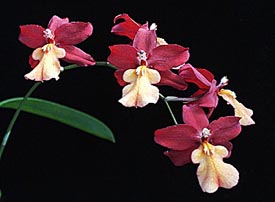ORCHIDS
 |
Courtesy of Orchid Limited |
The scientific name for the orchid is the Orchidaceae.This flower is among one of the largest families of flowering plants.It is estimated that there are 17,000 to 35,000 different species of orchids.These types of flowers can grow in all terrestrial ecosystems, with the exception of North and South Pole. The majority of orchids are found in tropical regions.
The orchid is a tougher and hardier plant than most people think it is.Many of the different species are highly adaptable to their surroundings.Orchids are different from other houseplants because they do not grow in soil.The majority of orchids in the wild are not rooted in the ground.Instead, they attach themselves by thick roots to the sides of trees and on branches.In order to absorb water, these plants cling to the bark of trees and get their nutrients from the air and rain that drips down the tree.
Orchids are divided into two main types based on their growth habits.The Symphodial orchid is characterized by individual shoots with limited growth.The stems of the Sympodial orchid develop into large storage organs.The second type of orchid is known as the Monopodial orchid.This type of orchid has unlimited growth patterns, and each shoot continuously produces leaves from the stem apex.
The flower of the orchid plant is colorful, fragrant and can vary in sizes from microscopic plants (Platystele) to long vines (Vanilla) to gigantic plants (Grammatophullum).There is an outer whorl of three similar segments called sepals.Within the sepals is another whorl of three segments called petals.The median petal is noticeably different from the other two by size, color and complexity and is referred to as the labellum.The center flower is known as the column, which is representing the fusing of elements of the stamens and pistil.There is an unbelievably large variation in all of the orchid species and their hybrids that make them unlike any other flower.
